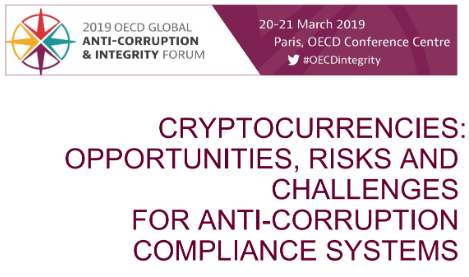
1. Introduction
The cryptocurrency concept was introduced 46 days after the bankruptcy of the Lehman Brothers, the event
marking the beginning of the second biggest financial crisis in the human history (Friedman & Friedman, 2009;
Knight, 2009; Partnoy, 2013), and it was for a long time either wrongly understood or completely ignored by
the general public. During the time when many executives, law makers and managers were trying to define
effective and preventive measures or practices to bring the economy back to the stable state, a small group of
engineers decided to pursue the cryptocurrency idea further. Unfortunately, a group of bad players also
emerged since they realised that there is a huge value proposition for illegal practices offered by the new
concept.
Although the concept has been around since 2008 (Nakamoto, 2008), and thousands of new constructs have
been created since, it is still a highly nascent and undiscovered area. The continuously growing complexity
has not prevented new players from entering the market. This caused the popularity of cryptocurrencies to
soar especially during the 2015-2017-time period, and pushed their prices to unimaginable levels, with Bitcoin
price reaching almost USD 20k at the end of 2017 (Higgins, 2017).
Typical characteristics of cryptocurrencies such as decentralisation, their inherit global character, anonymous
or pseudo-anonymous nature (Bonneau, Felten, Miller, & Narayanan, 2016; Clark & Narayanan, 2017;
Pilkington, 2016), together with the initial lack of any regulations for their field of operation, have led to the
situation in which cryptocurrencies started being considered as an interesting mechanism for those wishing to
bypass the law and commit illicit actions such as money laundering, dark market payments or even terrorist
financing (Houben & Snyers, 2018; Keatinge, Carlisle, & Keen, 2018; Keidar & Blemus, 2018). As a result,
various governing bodies on national and international levels, added cryptocurrencies to their agendas, trying
to define measures which should be undertaken in order to stop this illicit usage and to provide some
guidelines, allowing for their sustainable and legal development. But while cryptocurrencies moved from
garage laboratories to international conferences and board meetings, being discussed by representatives of
private and public sectors as well as individuals, it still largely remains an open topic and not much clarity has
been proposed so far.
The goal of the paper is thus to analyse which actions involving cryptocurrencies are especially at risk of
corruption, and to propose preventive measures which, once implemented, might limit or at least hinder the
illicit usage of cryptocurrencies. It uses the analysis of various documents published by founders, regulators
and consulting companies as well as interviews conducted with compliance experts as a source (research
method).
2. Cryptocurrencies and the role of blockchain technology
In order to be able to analyse cryptocurrencies’ related opportunities, risks and challenges for anti-corruption
compliance systems, it is essential to become familiar with the definitions, characteristics and key concepts
that build their foundations.
Although cryptocurrencies’ idea is already ten years old, cryptocurrencies are still lacking harmonized
definitions and taxonomies according to which they can be categorized. Various international and national
regulators propose different approaches classifying and thus defining cryptocurrencies either as a subclass of
broader digital money or as a part of narrowly defined virtual currencies. The former definition is favoured by
the Bank for International Settlements (2015) and the World Bank (2017). The latter approach is preferred by
the European Banking Association (2014), the European Central Bank (2015), The European Securities and
Markets Authority (2018) and the International Monetary Fund (2016) according to which all organisations
agree that what distinguishes cryptocurrencies from other financial instruments is their independent issuance
mechanism, not accepted by the official governing bodies. The definition published by the EU Parliament which
could be regarded as a compromise solution considers cryptocurrencies as “a digital representation of value
that (i) is intended to constitute a peer-to-peer (“P2P”) alternative to government-issued legal tender, (ii) is
used as a general-purpose medium of exchange (independent of any central bank), (iii) is secured by a
mechanism known as cryptography and (iv) can be converted into legal tender and vice versa” (Houben &
Snyers, 2018).
Being aware of the definition’s challenge, it is worth to elaborate on cryptocurrencies’ characteristics which
might partially explain the complexity of the terminology. First of all, it has to be pointed out that
cryptocurrencies are just one (albeit the first) out of many constructs called cryptoassets, that have been
created with the usage of blockchain technology1
. They are also a key element in a three-dimensional structure
introduced by Satoshi Nakamoto, calling it “a peer to peer electronic cash system” (2008). Such a system
consists of (i) the universal value representative2
(e.g. Bitcoin), (ii) infrastructure essential for its issuance,
settlement and audit trial (e.g. Bitcoin blockchain3
) and (iii) the rules governing money supply and transaction
related processes (e.g. Proof of Work). Despite the fact that the system is organisationally decentralised
meaning that there is no central entity governing the cryptocurrency supply, it has a very centralised logic with
all the rules being predefined and dictated by the open-source algorithm.
Cryptocurrencies also proved to be very successful use case for blockchain technology. Most cryptocurrencies
are built on public-permissionless blockchains (Hileman & Rauchs, 2017), as these constructs minimize the
information asymmetry (Tabarrok & Cowen, 2015) related to the transaction process and allow everybody to




